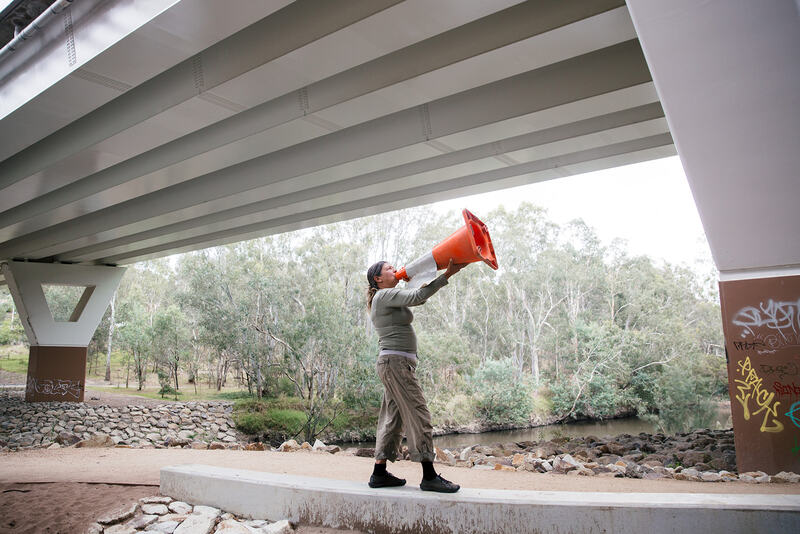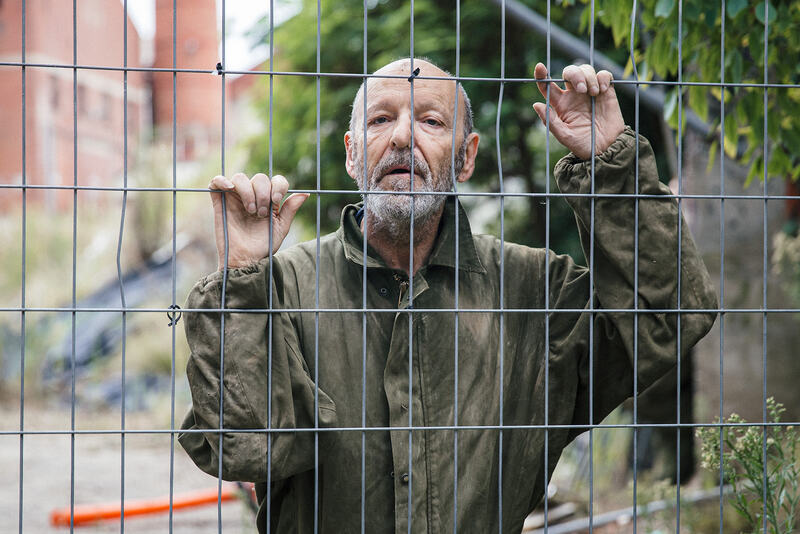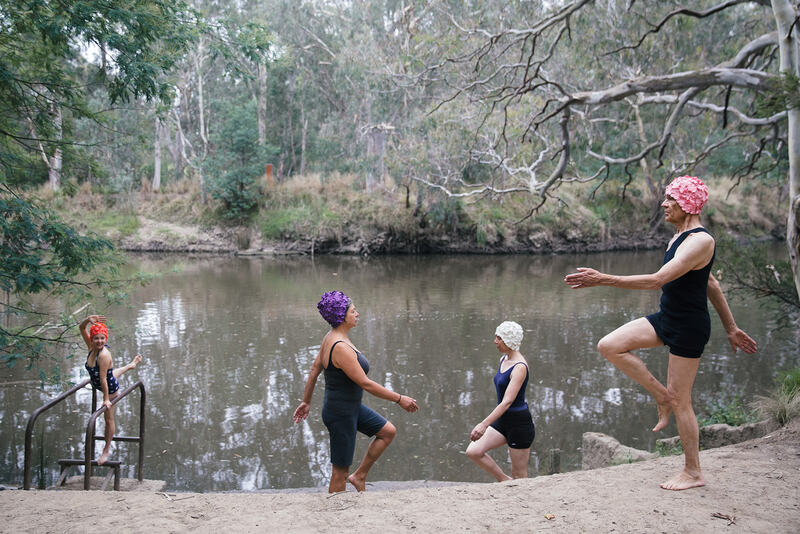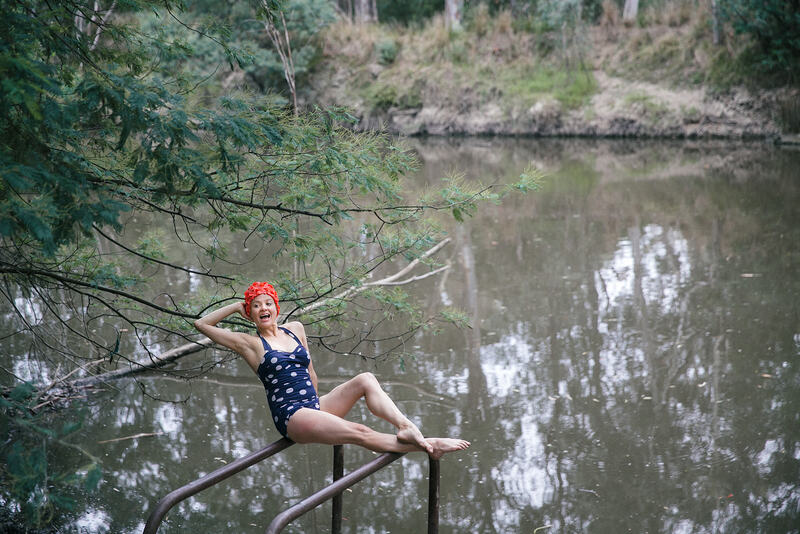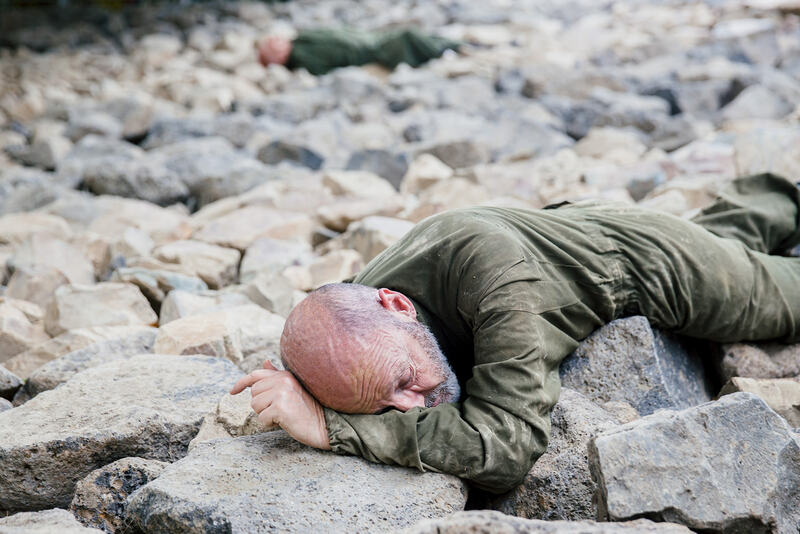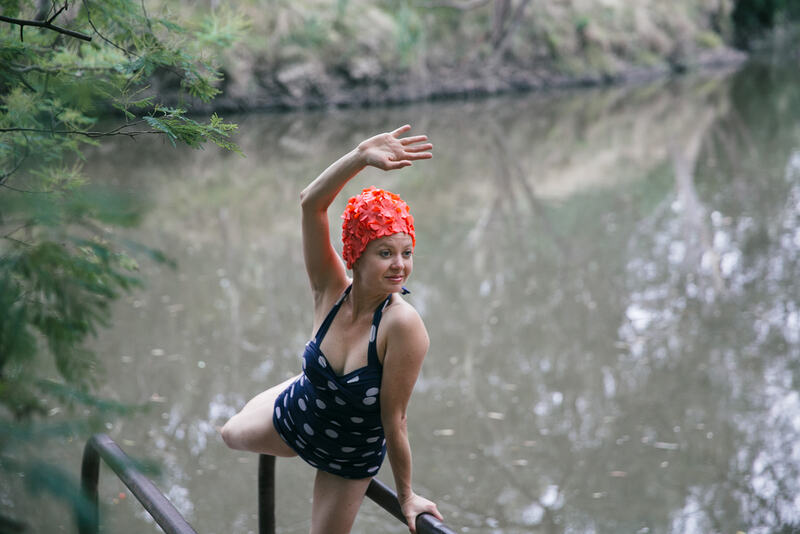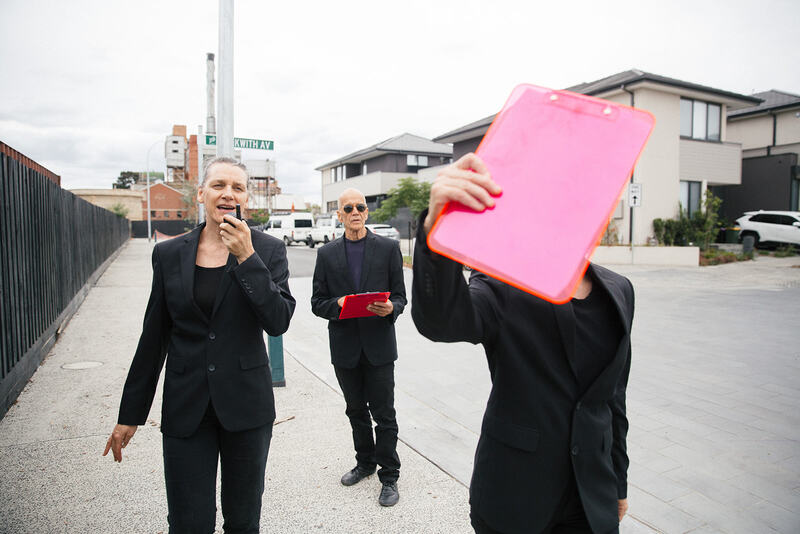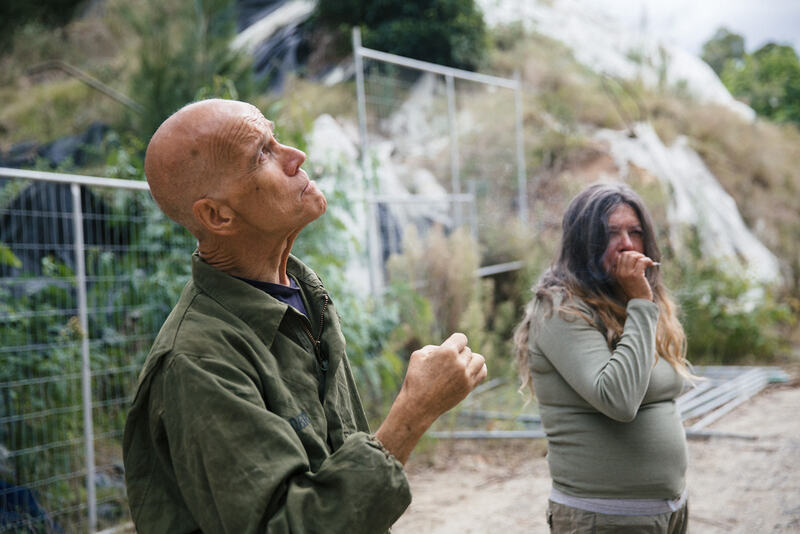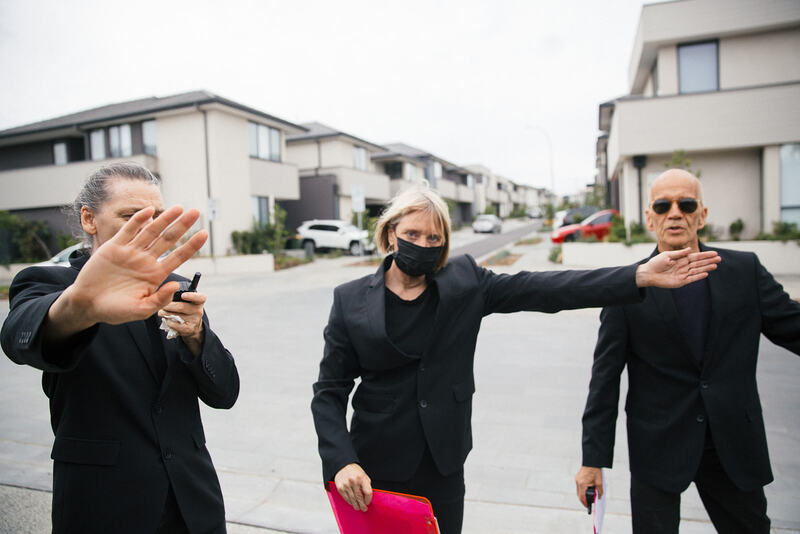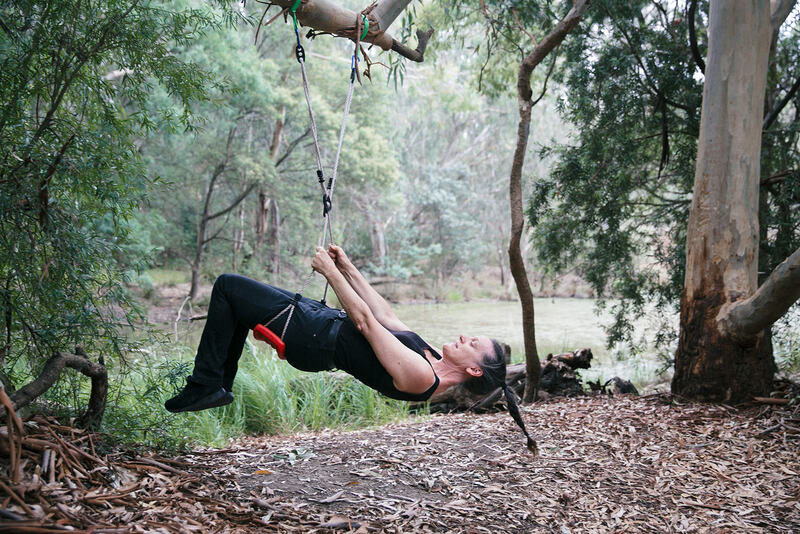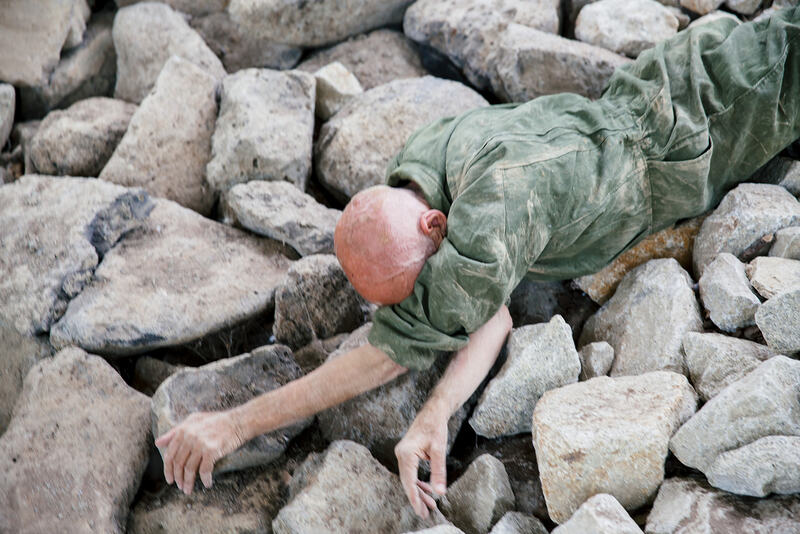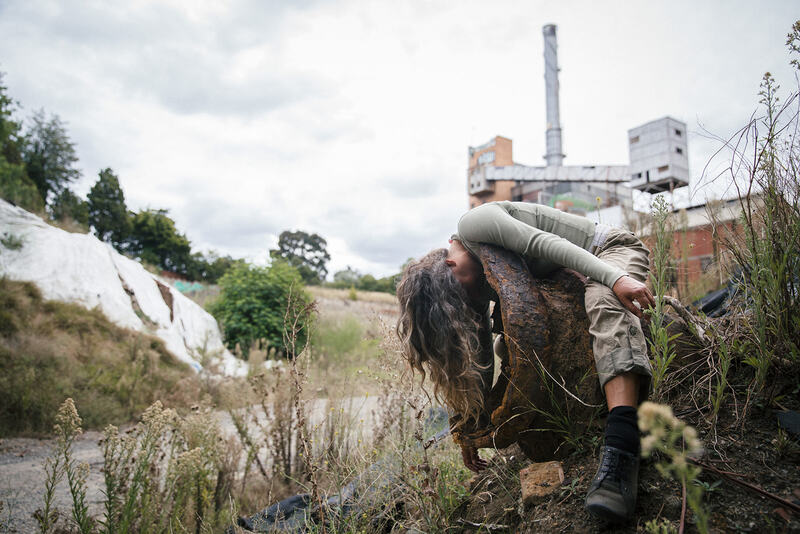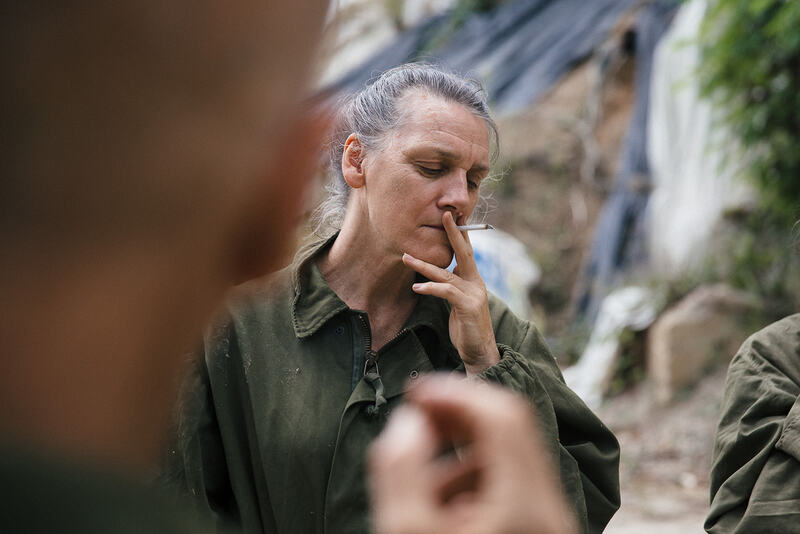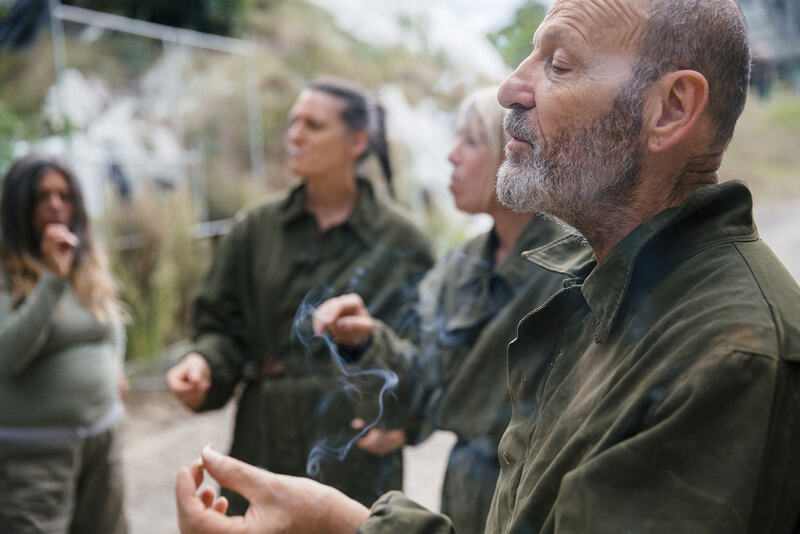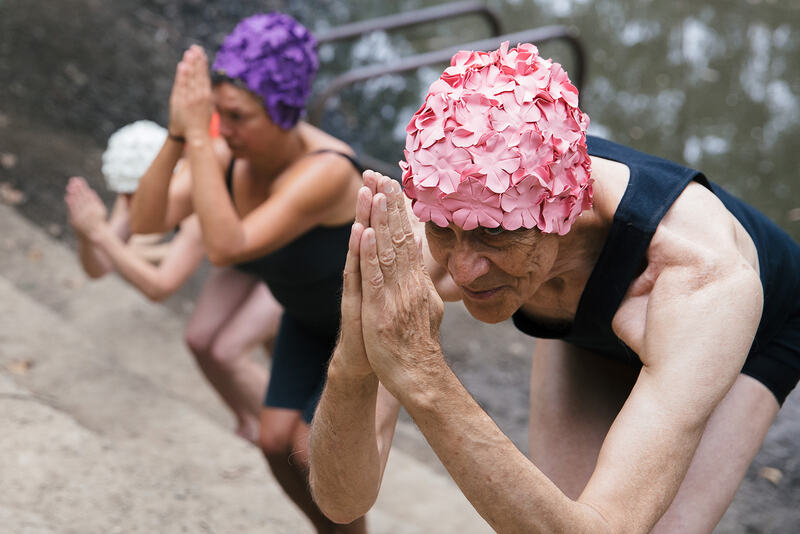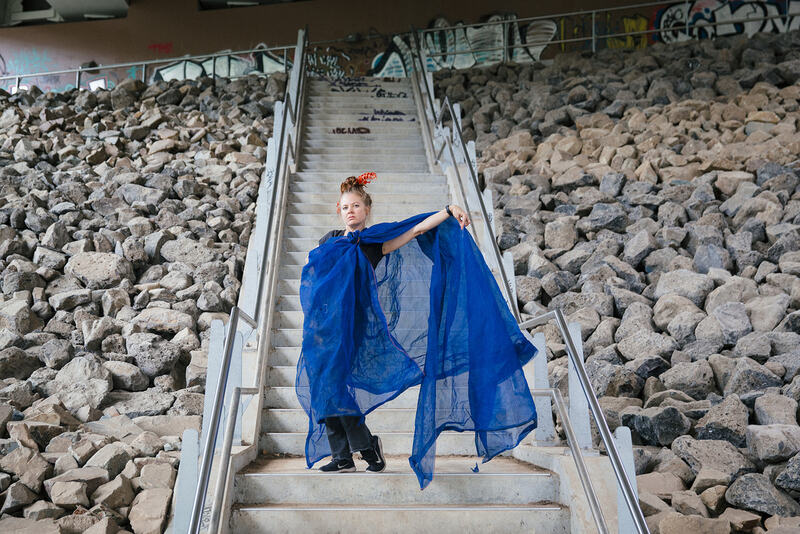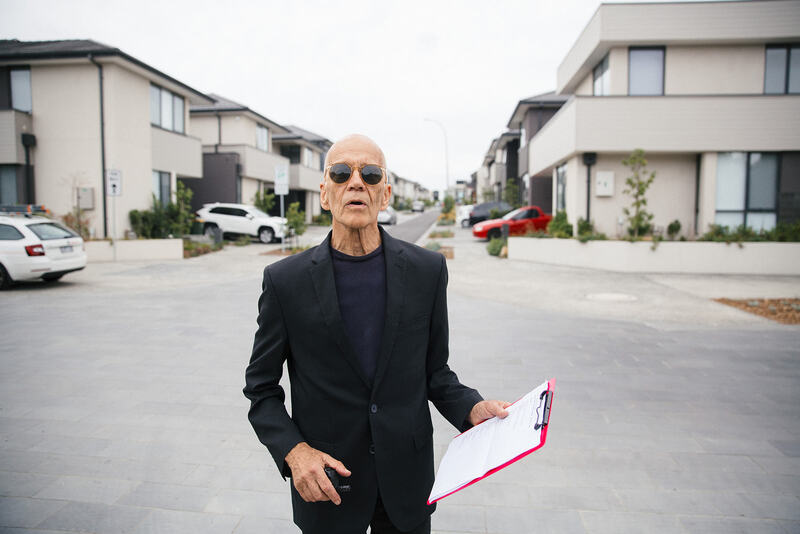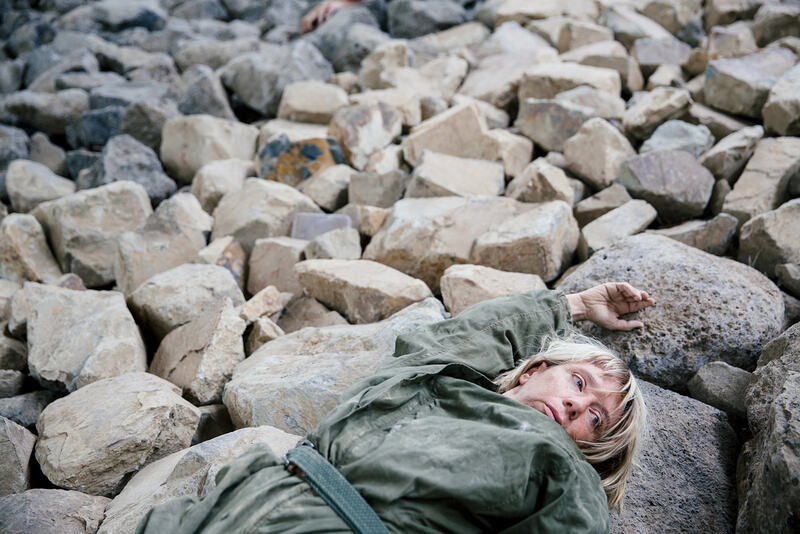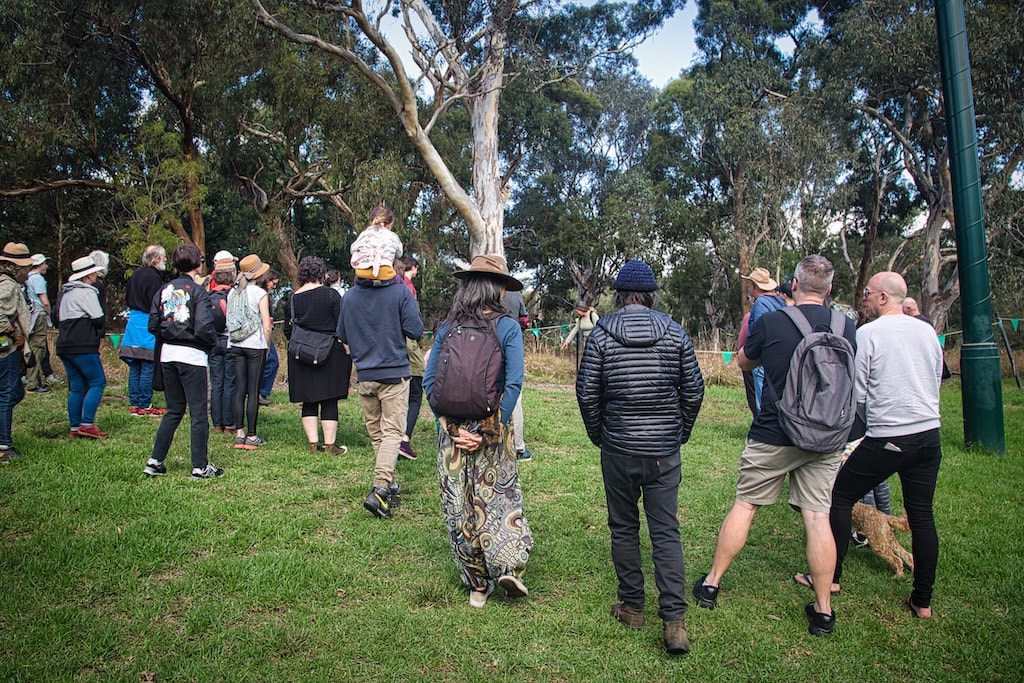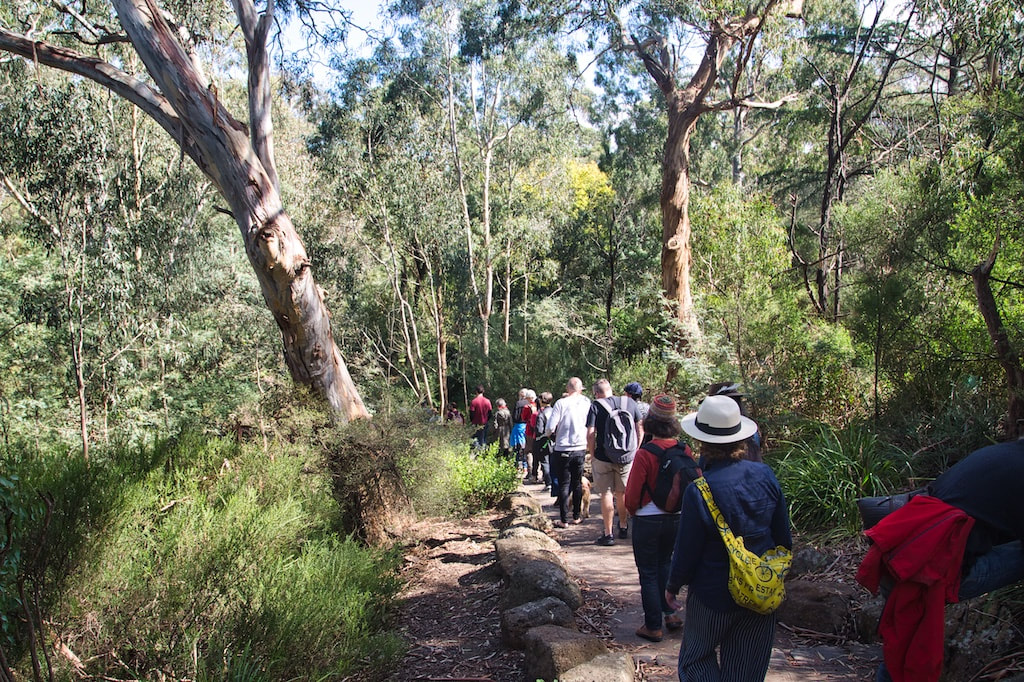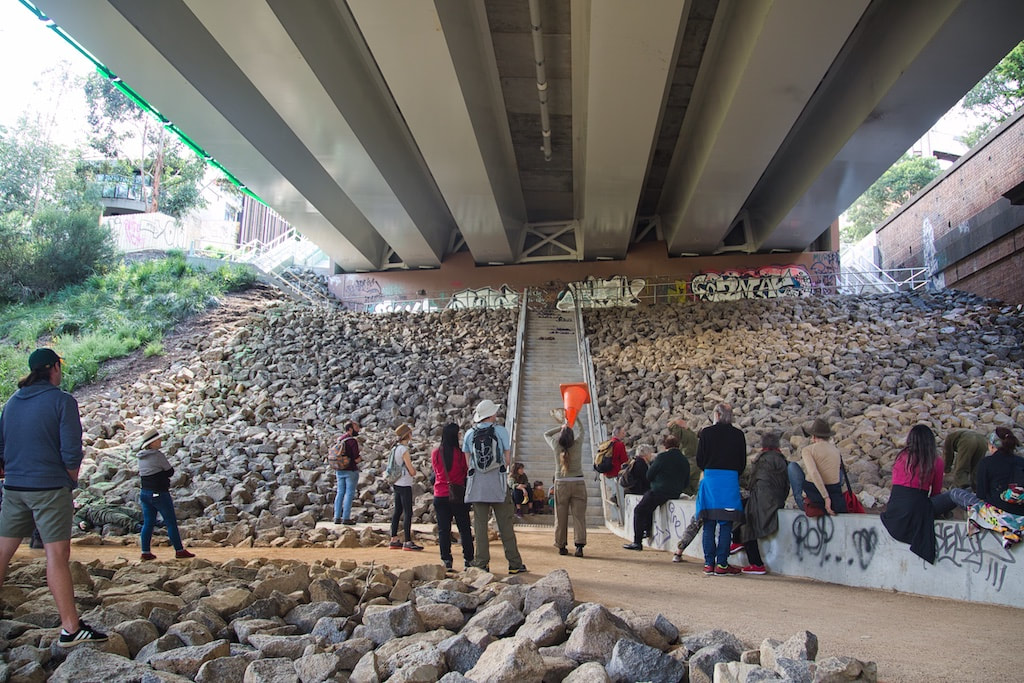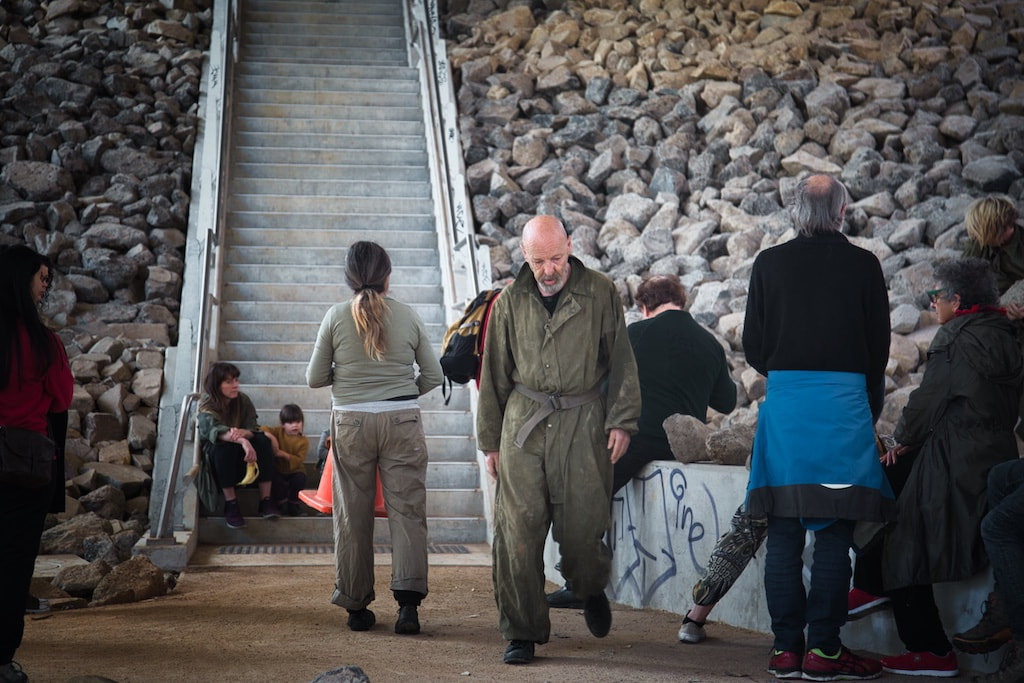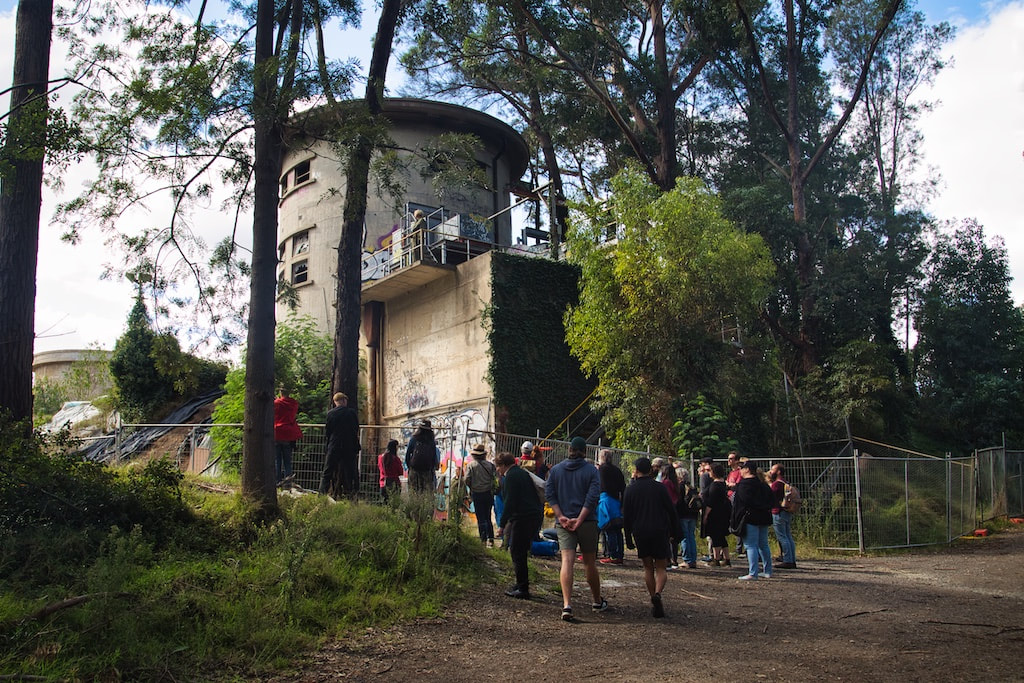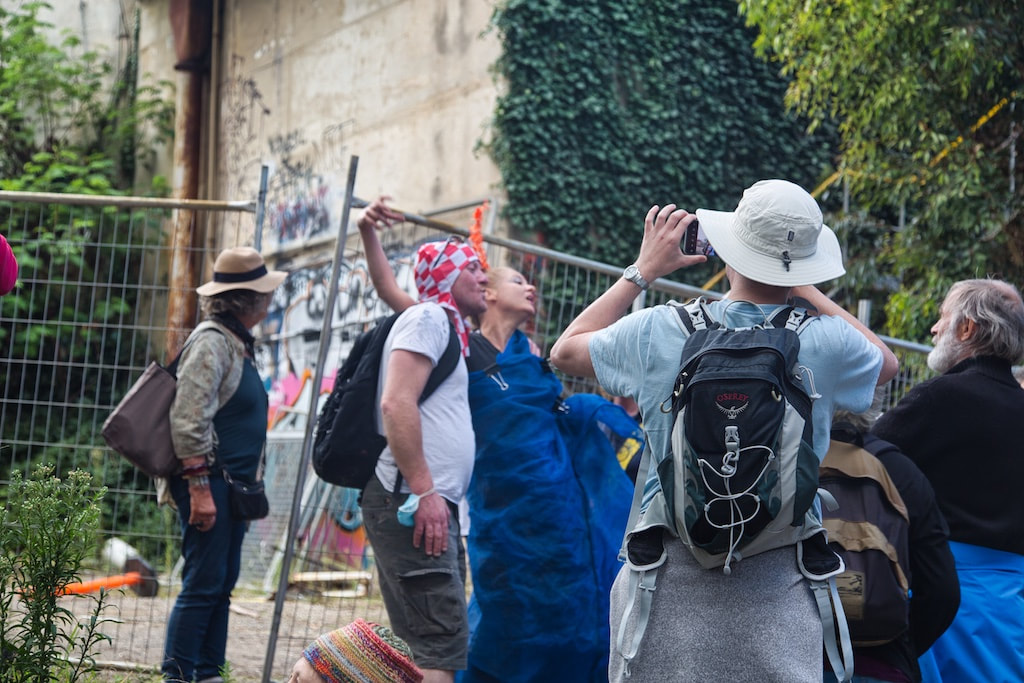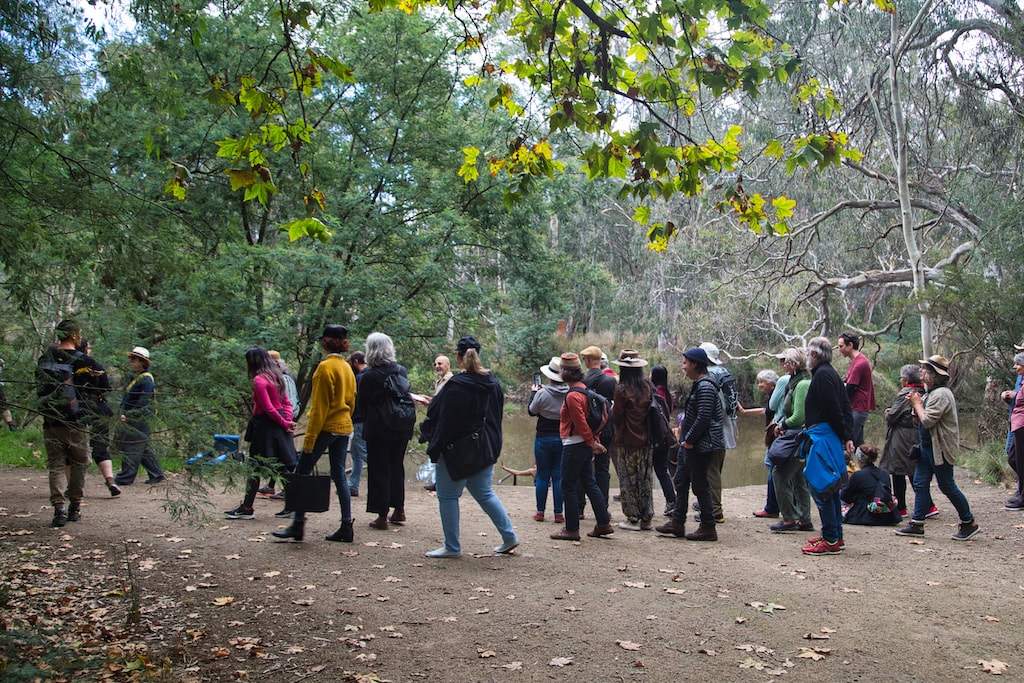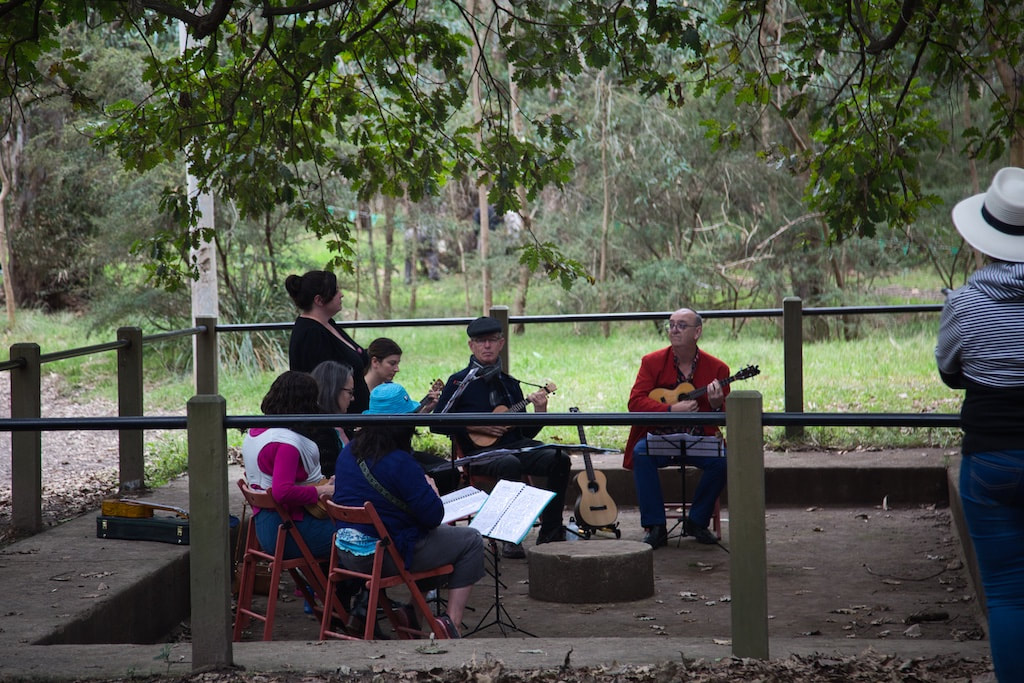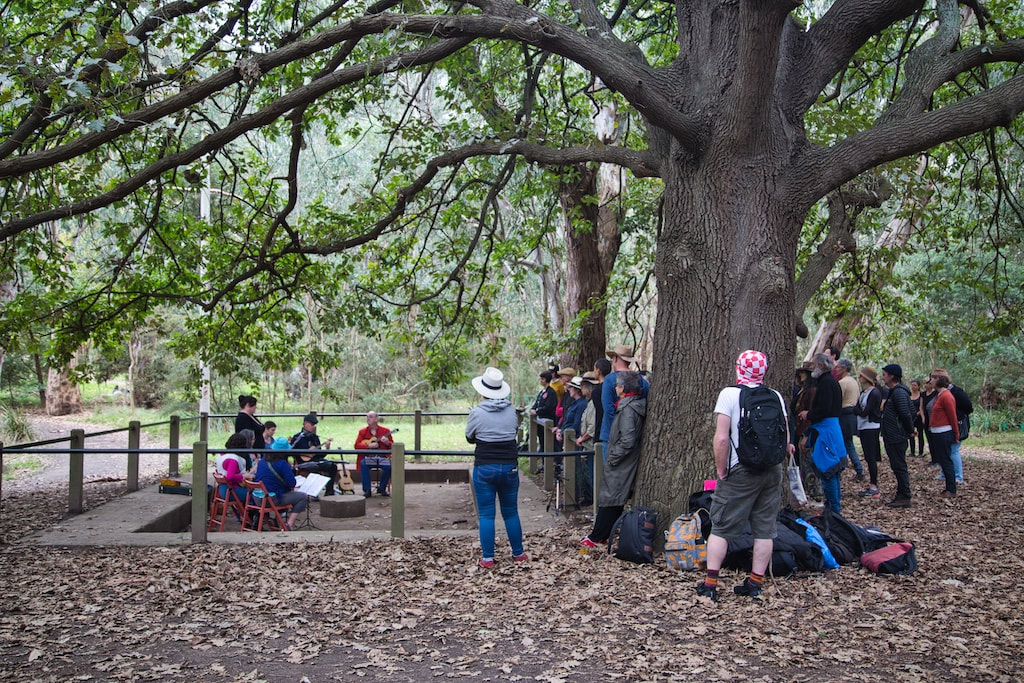PARTNER ORGANISATIONS
City of Yarra
Yarra City Arts
YarraBUG
Yarra City Arts
YarraBUG
DATES
Process: December 2020 - March 2021
Performances: March 27th and 28th 2021
Performances: March 27th and 28th 2021
ARTISTS
Bronwen Kamasz
Gretel Taylor
Helen Smith
Karen Berger
Peter Fraser
Stuart Grant
Gretel Taylor
Helen Smith
Karen Berger
Peter Fraser
Stuart Grant
BACKGROUND
During the Victorian lockdowns over the last year or so we have had our access to being outside in the neighbourhood severely curtailed with sometimes only an hour of outdoor exercise allowed and a curfew preventing night-time wanderings.
Where did we go? What was our experience of our local environment? Perhaps new places were found or did we notice the things that have always been there, somehow refreshed or transformed? Did our perception of moving through place shift?
EPA have been awarded funding to create a new public performance work in the City of Yarra. We have invited Yarra - Bicycle Users Group (YarraBug) to join our project as we develop 'in tandem' cycling and walking journeys that explore Yarra in these two modalities, intersecting at special places along the way. Public performances will be on March 27th and 28th details to come.
Our first step in this journey is to gather stories and experiences from locals who. live, work or meet in Yarra.
Where did we go? What was our experience of our local environment? Perhaps new places were found or did we notice the things that have always been there, somehow refreshed or transformed? Did our perception of moving through place shift?
EPA have been awarded funding to create a new public performance work in the City of Yarra. We have invited Yarra - Bicycle Users Group (YarraBug) to join our project as we develop 'in tandem' cycling and walking journeys that explore Yarra in these two modalities, intersecting at special places along the way. Public performances will be on March 27th and 28th details to come.
Our first step in this journey is to gather stories and experiences from locals who. live, work or meet in Yarra.

Supported by Yarra City Arts - Stimulate grants @cityofyarra #yarracityarts
THE PERFORMANCES
|
After months of gathering data, listening to stories and walking all over the City of Yarra from Cremorne to Carleton, we settled on the locality of Alphington along the Yarra as the place to site our work. On the 27th and 28th of March EPA took audiences for a two and a half hour walking experience through bushland, alongside the river, under a bridge, past a derelict industrial site, a bland housing estate, a swimming hole, under an old oak tree and finishing at Kate Herd's garden and restored wetland.
|
Photos: Laki Sideris
OUR AUDIENCE:
Photos: Iolanthe Iezzi
FEEDBACK:
"Ive never seen anything like this before!"
"The Ukulele band was great...the kookaburras joining in with the Kazoo...the baby appearing from under the musicians arm at the end!"
"My little boy went back to the river the next day: he took me to the river's edge and said (gesturing with his arms) 'look daddy, the river is just like a painting'."
"Those new apartments are soulless, they have absolutely no relation to their environment - it was really clever how you brought attention to that with the "nothing to see here" section."
"You showed me something new about my own area."
I loved the eclectic nature of the performance, and the way it moved from one space to another with context. I found my emotions transitioning between the walking from contemplation and meditation to humour, delight, concern and thoughtfulness. It was interesting to learn about the history of each site. at the same time being "entertained". At times having time to think about what had occurred eg the actors rolling down the rocks under the bridge. Becoming aware of my emotions to that because of the time it took. Joy, the music under the oak. Surprises and unexpectedness. The surrealness created when we walked past the houses creating a stark contrast between the river/ natural environment and the housing development.
The games near the water, I had forgotten them. We played them often as children especially at birthday parties. Memories of wanting to be the one who grabbed the stick. We called it statues. Not important now. Able to be conscious of participating and enjoy the game. Discovering many things that afternoon was wonderful.
I loved how it continually surprised me.
"The Ukulele band was great...the kookaburras joining in with the Kazoo...the baby appearing from under the musicians arm at the end!"
"My little boy went back to the river the next day: he took me to the river's edge and said (gesturing with his arms) 'look daddy, the river is just like a painting'."
"Those new apartments are soulless, they have absolutely no relation to their environment - it was really clever how you brought attention to that with the "nothing to see here" section."
"You showed me something new about my own area."
I loved the eclectic nature of the performance, and the way it moved from one space to another with context. I found my emotions transitioning between the walking from contemplation and meditation to humour, delight, concern and thoughtfulness. It was interesting to learn about the history of each site. at the same time being "entertained". At times having time to think about what had occurred eg the actors rolling down the rocks under the bridge. Becoming aware of my emotions to that because of the time it took. Joy, the music under the oak. Surprises and unexpectedness. The surrealness created when we walked past the houses creating a stark contrast between the river/ natural environment and the housing development.
The games near the water, I had forgotten them. We played them often as children especially at birthday parties. Memories of wanting to be the one who grabbed the stick. We called it statues. Not important now. Able to be conscious of participating and enjoy the game. Discovering many things that afternoon was wonderful.
I loved how it continually surprised me.
BICYCLE RIDE:
Coming soon! - a community bicycle ride through the City of Yarra mapped by Faith Hunter of YarraBUG incorporating sites and places discovered through EPA's research process.
Collected Stories from residents and workers in the City of Yarra
JOHN
Lockdown definitely led me to question I guess the nature of what we consider nature, green space especially; even the park we sit in now. You find grass, but it wouldn't have been here hundreds of years ago and things like this. And when you see a site deprived of humans, you realise almost like a sort of post-human state that I guess the lockdown had for us. And green spaces, all through the city, I guess have that when you see humans taken out of a space; all of a sudden it de-naturalises it and you start to question. Oh, why is this actually here? Who would use sites like this and who they service. I guess that's what the park did for me and parks is a big place so I went to what's on so
It sounds like Situationism, like ideas of reclaiming space for example, which is quite cool. We'd definitely be down to go to something like this Yeah, sounds good.
And I think it's an important thing. I think we don't think enough about the places we occupy. Especially like a par.k I go here every day but don't really think about it, you know, like look at the pond and details or think "Why is this here?" or, you know, stuff like that. Yeah. I like the name environmental performance authority APA. Yeah. That's cool. Awesome. Well good luck with them.
MATT
It most definitely like what we consider natural today, in a place like the metropolis. A city is very much anything but nature, like, it's always has men sort of like stains on it. And very few places in cities are like wild spaces. Even ducks for example would not have been here at this lake. ........we just take this for granted in the city.
When I first moved here I was walking to the city a lot and it's very very busy and always occupied, every building every restaurant every cafe. In lockdown it's a lot more empty and desolate, which makes it very artificial and kind of brutal. It's very in your face; when it's full of people you don't notice as much but when you just have buildings that are completely empty with like lights on and where people should be, where you assume people should be, it becomes very confronting almost like the nature of the city is different when it's empty. It's almost apocalyptic sometimes. It takes a new form.
Just seeing all these buildings, empty, feels very desolate. The lack of human. When it's filled with humans you don't really notice as much, it's just a bustling city. But when it's empty everything seems so much more intense and it takes on a cold desolate sort of style. On the subject of modern architecture: you notice how design is just for what it is. When there's people it has that little bit of life but once you remove people from the equation it's completely cold and almost harsh. It doesn't feel very inviting especially the big empty hotel buildings. ..... you just see these empty trams and delivery food delivery scooters. And cats running across the road! Normally these cats wouldn't be on the road in the middle of the day but now things are going back to that natural state almost. ...we saw similar things all around the world, like deer and bears in the middle of cities because it's almost like a reclaiming of what was once theirs. ..it makes you feel very strange about what humans have created and it makes you question whether progress in all of this is good. All these massive glass buildings if they're actually good. And it for sure makes you consider human development and whether it's a good for the planet.
I'm a street photographer and the lockdowns has actually been amazing for me photographing things like a hotel lobby that was completely empty, like an old abandoned one but it would have been busy before COVID with people living there. But this was abandoned in the city and it was filled with white light, very intense, with fire extinguishers in the corner of the room that got dirt on the ground, like bricks and random stuff; but as a photographer, it's almost like a blessing. I love it, like I love the business of the city with people, but architecturally it's really really cool. It's almost like, without COVID, you can't really ever have that. I would never have the opportunity to photograph it. An empty city... is actually quite a blessing in disguise for artists and creative people, because it gives you a new perspective and lets you see ...
When it was very busy I was loving all the people and that was what was interesting, but once the people are out of the equation you start to notice like interesting shapes and like things you wouldn't notice.. so yeah I quite like it........this mindfulness. In the city it's really sensory overload a lot of the time so you can't really take in a lot of things. COVID brought empty spaces, you can kind of experience simple, like the sound of rustling leaves that you commonly can't hear a lot of the time or like the birds in trees because there's so much noise. It's quite interesting how you can sort of experience things in a more natural state
CALLUM
I've spent a lot more time in this park. Yep, which has been nice especially like towards the end of the last lockdown and in this one.
It dawned on me that: it's crucial to, your state of mind, just to not be in the house. I spent probably the past six months last year, I think, recovering from my response and coping mechanisms to stay indoors and not leave my bedroom as I had COVID and couldn't leave it for the safety of the housemates. I know I can't stand being in there for more than a couple of days at times or when the sun's out I'll be in the park.
I used to come here (to this park) and have a drink with friends or something like that and not really, you know, not really...close my eyes and yeah and just do nothing, and just enjoy the sight of trees and the sun the water....... and that's change though because I come here just for that alone. You know I just have grass against skin or whatever - it's nice.
We were using this park as a place to socialise. And that was really it, and I'd maybe come here for the occasional run around the park. So I took it for granted. I'm really grateful to live in such close proximity. During lockdown it was extremely beneficial for mental health.
The experience of the COVID virus itself was fine. I had very mild symptoms and, you know, maybe a bit fluey for a couple of days, but the hard part. the difficult part was not being able to leave the house, and not really been able to leave the bedroom because the other housemates only three out of six of us had COVID so we obviously had to be really careful not to come into contact with the others. So really it was a case of just not leaving the bedroom for like 17 days, which is hard. It's hard. It's hard to get food and we went a little bit nuts.
JUDY
JUDY Walked with her Nordic walking group and dog(s) near Dight’s Falls – a place that was a middle point where people from three different suburban lockdown areas could meet, like the overlapping areas of a Venn Diagram: “That was my lifeblood during COVID.”
The lockdown experience affirmed the value of the natural “when everything else is disappearing, that endures”.
Judy would have been bereft without her choir which met on Zoom. Nevertheless, the impact of being together in person is palpable: increased awareness of the value of being together…the conversation, meeting another person’s eye.
“It was a disruptive year but with things I want to hang on to”
ANDY
"We just rode around on our bikes, visited each other. Nothing much is different than from before - just hung out with my mates, hung out at each other's places - not much to do. Its kinda the same really - we didn't worry about the rules much. You know...."
ANNA
Anna also had some “Venn Diagram” meeting spots; particular corners or parts of a park where she could meet her mother or her sister.
Her workplace is a child care centre and a kindergarten. They would normally be out and about, involving the children in everyday community activities like shopping, and with the older children engaged in visiting and mapping the Birrarung.
In 2020 they spent lots of time, deeply, in one place, near Yarra Bend Golf Course: Anna was astonished by walls she had taken no interest in previously: amazing bluestone walls – rougher than they would be today, not professional, in strange shapes.
And the children discovered a bush cubby near the Boathouse that from visit to visit was in continual process of repair.
JULIAN
Was amused by the roving groups of people employed to polish objects in Yarra streets with disinfectant. Objects that seemed unlikely to cause any COVID harm. They’d find “some object that had been untouched for generations and give it a good wipe”.
It felt bizarre wearing a mask on an empty street so he took to taking empty laneways, unmasked: he got to see the private lives of people living on the laneways.
The southern end of George St has wonderful 19th century architecture. Having nothing else to do he noticed this: usually, being more purposeful, we don’t look carefully.
He was fascinated by an old decaying Scout Hall that had a musty book smell and looks like a place know to previous generations but unused for a very long time: somewhere around Richardson St Carlton.
Julian also recalled a book launch under the spacious verandah of a Neighbourhood House rather than inside as it would normally have been. The House was in N Fitzroy, Princes St end. Also an Italian Nursing Home on Park street in a building that had been a sub-station. Roger: There used to be a wood factory at the railway end and the railway was featured in the film Mouth to Mouth. Laki: and silos.
Julian suggested - The project should include a nap!
KIPP
Delivering library books to Rushall Park was a relief from working from home. It is a fascinating place, like a tiny old English village – it is a place where some of the most vulnerable to COVID live.
ROGER
There is a wonderful, potential performance site at the old Yorkshire Brewery tower, that now stands within an apartment development: cnr Wellington St and Waterloo Lane.
DANIELLA
Daniella said that she let go of aesthetics when choosing where to walk and walking during this time. She and a friend live on opposite ends of a bike track that is the least scenic track in the area. She normally likes to deviate all over the place with her walks – but in COVID she would text her friend as she set out on the track and if they met they met. Not like more formal precise phone arrangements from before COVID. It reminded her of Marina Abramovic’s project where she and her partner set out from opposite ends of the Great Wall of China to meet each other.
Daniella would do a walking meditation – using the repetition and less distracting qualities of the track. The result was beautiful conversations. And she looked differently. ‘I could see the beauty in trees where I’d have previously thought “nah!”
Daniella noticed that the streets were more overgrown with weeds. Although pretty ugly and brutal she embraced it in a different, more appreciative way. Seeing nature in desolate places. She saw trees shapes.
Daniella also saw children making cubbies from branches and realised: “Oh! Perhaps we’re allowed to do that! "
DAMIAN
"I’ve been told children are discovering trees can be climbed!"
"I’ve noticed three bird species I hadn’t seen before".
MATTEO
“You get used to thinking that you have to drive an hour to see anything"
He found he had time to draw after all (new attitude and working from home)
He spent more time regularly visiting a reserve just sitting and looking and as a birdwatcher he said “eventually I noticed birds I’d never known were there before”.
People put photos of insects on Facebook.
TONI
Did lots of walks with their two children.
Because there were no galleries open they went to look at street art.
Saw a rabbit mural where the rabbit seemed to be running fast, which made the kids wonder why? Toni has used it in her teaching since.
“We went to all the bridges” eg the Alphington Pipe Bridge, Kanes Bridge In Fairfield etc
Lockdown definitely led me to question I guess the nature of what we consider nature, green space especially; even the park we sit in now. You find grass, but it wouldn't have been here hundreds of years ago and things like this. And when you see a site deprived of humans, you realise almost like a sort of post-human state that I guess the lockdown had for us. And green spaces, all through the city, I guess have that when you see humans taken out of a space; all of a sudden it de-naturalises it and you start to question. Oh, why is this actually here? Who would use sites like this and who they service. I guess that's what the park did for me and parks is a big place so I went to what's on so
It sounds like Situationism, like ideas of reclaiming space for example, which is quite cool. We'd definitely be down to go to something like this Yeah, sounds good.
And I think it's an important thing. I think we don't think enough about the places we occupy. Especially like a par.k I go here every day but don't really think about it, you know, like look at the pond and details or think "Why is this here?" or, you know, stuff like that. Yeah. I like the name environmental performance authority APA. Yeah. That's cool. Awesome. Well good luck with them.
MATT
It most definitely like what we consider natural today, in a place like the metropolis. A city is very much anything but nature, like, it's always has men sort of like stains on it. And very few places in cities are like wild spaces. Even ducks for example would not have been here at this lake. ........we just take this for granted in the city.
When I first moved here I was walking to the city a lot and it's very very busy and always occupied, every building every restaurant every cafe. In lockdown it's a lot more empty and desolate, which makes it very artificial and kind of brutal. It's very in your face; when it's full of people you don't notice as much but when you just have buildings that are completely empty with like lights on and where people should be, where you assume people should be, it becomes very confronting almost like the nature of the city is different when it's empty. It's almost apocalyptic sometimes. It takes a new form.
Just seeing all these buildings, empty, feels very desolate. The lack of human. When it's filled with humans you don't really notice as much, it's just a bustling city. But when it's empty everything seems so much more intense and it takes on a cold desolate sort of style. On the subject of modern architecture: you notice how design is just for what it is. When there's people it has that little bit of life but once you remove people from the equation it's completely cold and almost harsh. It doesn't feel very inviting especially the big empty hotel buildings. ..... you just see these empty trams and delivery food delivery scooters. And cats running across the road! Normally these cats wouldn't be on the road in the middle of the day but now things are going back to that natural state almost. ...we saw similar things all around the world, like deer and bears in the middle of cities because it's almost like a reclaiming of what was once theirs. ..it makes you feel very strange about what humans have created and it makes you question whether progress in all of this is good. All these massive glass buildings if they're actually good. And it for sure makes you consider human development and whether it's a good for the planet.
I'm a street photographer and the lockdowns has actually been amazing for me photographing things like a hotel lobby that was completely empty, like an old abandoned one but it would have been busy before COVID with people living there. But this was abandoned in the city and it was filled with white light, very intense, with fire extinguishers in the corner of the room that got dirt on the ground, like bricks and random stuff; but as a photographer, it's almost like a blessing. I love it, like I love the business of the city with people, but architecturally it's really really cool. It's almost like, without COVID, you can't really ever have that. I would never have the opportunity to photograph it. An empty city... is actually quite a blessing in disguise for artists and creative people, because it gives you a new perspective and lets you see ...
When it was very busy I was loving all the people and that was what was interesting, but once the people are out of the equation you start to notice like interesting shapes and like things you wouldn't notice.. so yeah I quite like it........this mindfulness. In the city it's really sensory overload a lot of the time so you can't really take in a lot of things. COVID brought empty spaces, you can kind of experience simple, like the sound of rustling leaves that you commonly can't hear a lot of the time or like the birds in trees because there's so much noise. It's quite interesting how you can sort of experience things in a more natural state
CALLUM
I've spent a lot more time in this park. Yep, which has been nice especially like towards the end of the last lockdown and in this one.
It dawned on me that: it's crucial to, your state of mind, just to not be in the house. I spent probably the past six months last year, I think, recovering from my response and coping mechanisms to stay indoors and not leave my bedroom as I had COVID and couldn't leave it for the safety of the housemates. I know I can't stand being in there for more than a couple of days at times or when the sun's out I'll be in the park.
I used to come here (to this park) and have a drink with friends or something like that and not really, you know, not really...close my eyes and yeah and just do nothing, and just enjoy the sight of trees and the sun the water....... and that's change though because I come here just for that alone. You know I just have grass against skin or whatever - it's nice.
We were using this park as a place to socialise. And that was really it, and I'd maybe come here for the occasional run around the park. So I took it for granted. I'm really grateful to live in such close proximity. During lockdown it was extremely beneficial for mental health.
The experience of the COVID virus itself was fine. I had very mild symptoms and, you know, maybe a bit fluey for a couple of days, but the hard part. the difficult part was not being able to leave the house, and not really been able to leave the bedroom because the other housemates only three out of six of us had COVID so we obviously had to be really careful not to come into contact with the others. So really it was a case of just not leaving the bedroom for like 17 days, which is hard. It's hard. It's hard to get food and we went a little bit nuts.
JUDY
JUDY Walked with her Nordic walking group and dog(s) near Dight’s Falls – a place that was a middle point where people from three different suburban lockdown areas could meet, like the overlapping areas of a Venn Diagram: “That was my lifeblood during COVID.”
The lockdown experience affirmed the value of the natural “when everything else is disappearing, that endures”.
Judy would have been bereft without her choir which met on Zoom. Nevertheless, the impact of being together in person is palpable: increased awareness of the value of being together…the conversation, meeting another person’s eye.
“It was a disruptive year but with things I want to hang on to”
ANDY
"We just rode around on our bikes, visited each other. Nothing much is different than from before - just hung out with my mates, hung out at each other's places - not much to do. Its kinda the same really - we didn't worry about the rules much. You know...."
ANNA
Anna also had some “Venn Diagram” meeting spots; particular corners or parts of a park where she could meet her mother or her sister.
Her workplace is a child care centre and a kindergarten. They would normally be out and about, involving the children in everyday community activities like shopping, and with the older children engaged in visiting and mapping the Birrarung.
In 2020 they spent lots of time, deeply, in one place, near Yarra Bend Golf Course: Anna was astonished by walls she had taken no interest in previously: amazing bluestone walls – rougher than they would be today, not professional, in strange shapes.
And the children discovered a bush cubby near the Boathouse that from visit to visit was in continual process of repair.
JULIAN
Was amused by the roving groups of people employed to polish objects in Yarra streets with disinfectant. Objects that seemed unlikely to cause any COVID harm. They’d find “some object that had been untouched for generations and give it a good wipe”.
It felt bizarre wearing a mask on an empty street so he took to taking empty laneways, unmasked: he got to see the private lives of people living on the laneways.
The southern end of George St has wonderful 19th century architecture. Having nothing else to do he noticed this: usually, being more purposeful, we don’t look carefully.
He was fascinated by an old decaying Scout Hall that had a musty book smell and looks like a place know to previous generations but unused for a very long time: somewhere around Richardson St Carlton.
Julian also recalled a book launch under the spacious verandah of a Neighbourhood House rather than inside as it would normally have been. The House was in N Fitzroy, Princes St end. Also an Italian Nursing Home on Park street in a building that had been a sub-station. Roger: There used to be a wood factory at the railway end and the railway was featured in the film Mouth to Mouth. Laki: and silos.
Julian suggested - The project should include a nap!
KIPP
Delivering library books to Rushall Park was a relief from working from home. It is a fascinating place, like a tiny old English village – it is a place where some of the most vulnerable to COVID live.
ROGER
There is a wonderful, potential performance site at the old Yorkshire Brewery tower, that now stands within an apartment development: cnr Wellington St and Waterloo Lane.
DANIELLA
Daniella said that she let go of aesthetics when choosing where to walk and walking during this time. She and a friend live on opposite ends of a bike track that is the least scenic track in the area. She normally likes to deviate all over the place with her walks – but in COVID she would text her friend as she set out on the track and if they met they met. Not like more formal precise phone arrangements from before COVID. It reminded her of Marina Abramovic’s project where she and her partner set out from opposite ends of the Great Wall of China to meet each other.
Daniella would do a walking meditation – using the repetition and less distracting qualities of the track. The result was beautiful conversations. And she looked differently. ‘I could see the beauty in trees where I’d have previously thought “nah!”
Daniella noticed that the streets were more overgrown with weeds. Although pretty ugly and brutal she embraced it in a different, more appreciative way. Seeing nature in desolate places. She saw trees shapes.
Daniella also saw children making cubbies from branches and realised: “Oh! Perhaps we’re allowed to do that! "
DAMIAN
"I’ve been told children are discovering trees can be climbed!"
"I’ve noticed three bird species I hadn’t seen before".
MATTEO
“You get used to thinking that you have to drive an hour to see anything"
He found he had time to draw after all (new attitude and working from home)
He spent more time regularly visiting a reserve just sitting and looking and as a birdwatcher he said “eventually I noticed birds I’d never known were there before”.
People put photos of insects on Facebook.
TONI
Did lots of walks with their two children.
Because there were no galleries open they went to look at street art.
Saw a rabbit mural where the rabbit seemed to be running fast, which made the kids wonder why? Toni has used it in her teaching since.
“We went to all the bridges” eg the Alphington Pipe Bridge, Kanes Bridge In Fairfield etc
